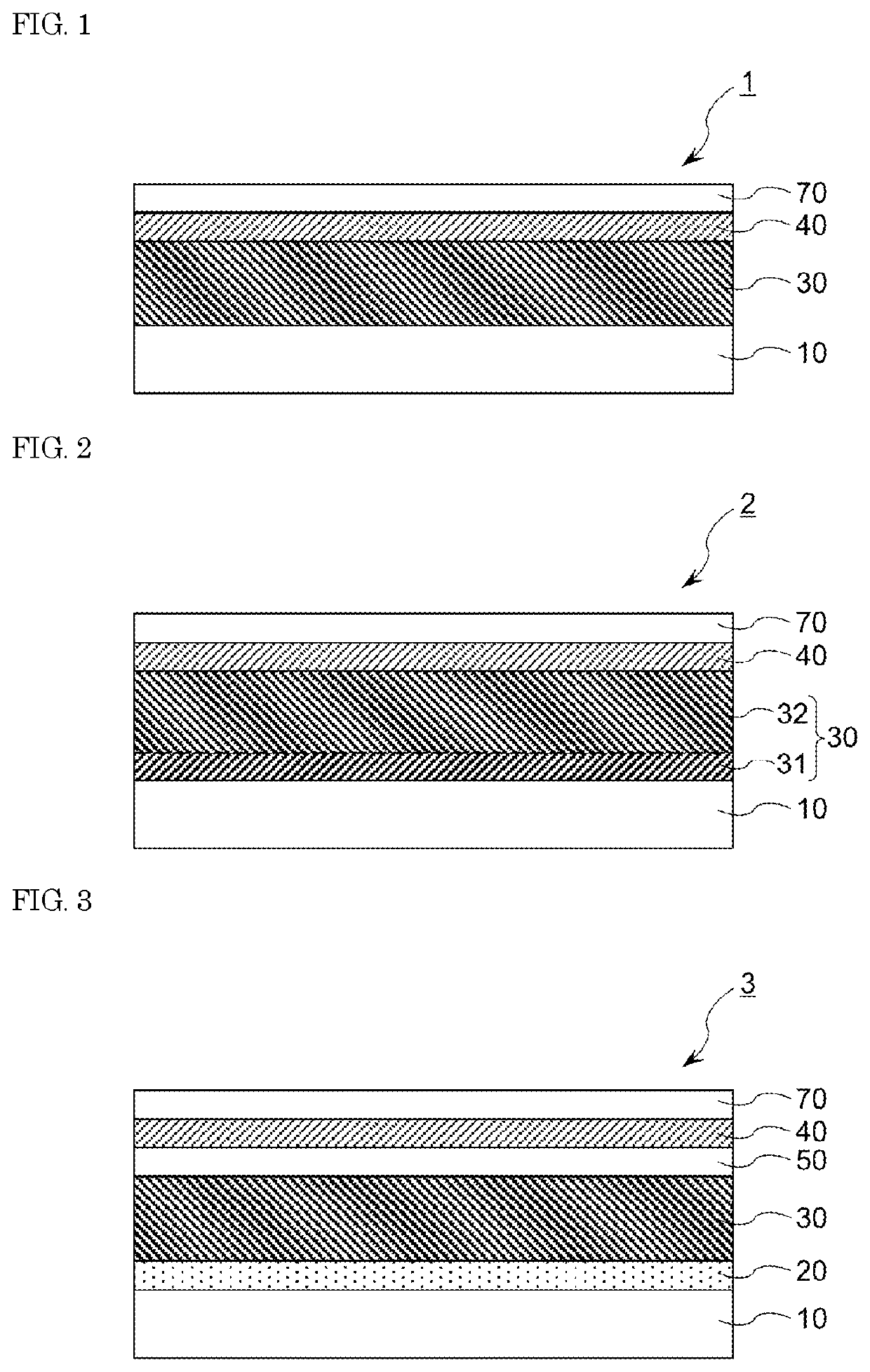Light control film and manufacturing method thereof
a technology of light control film and manufacturing method, which is applied in the direction of vacuum evaporation coating, instruments, coatings, etc., can solve the problems of deterioration of the switching characteristics of hydrogen-activation-type light-modulation materials, and achieve excellent switching durability and good coverage with the surface layer
- Summary
- Abstract
- Description
- Claims
- Application Information
AI Technical Summary
Benefits of technology
Problems solved by technology
Method used
Image
Examples
example 1
[0070]A roll of a 188 μm-thick polyethylene terephthalate (PET) film (manufactured by Mitsubishi Plastics, Inc.) was set in a roll-to-roll sputtering apparatus, and the inside of a sputtering apparatus was evacuated until the ultimate vacuum degree reached 5×10−3 Pa. The PET film substrate was conveyed in the sputtering apparatus without introducing a sputtering gas to perform degassing of the PET film substrate.
[0071]Thereafter, argon gas was introduced into the sputtering apparatus, the PET film was continuously conveyed at a rate of 1 m / minute, and on a deposition roll, a light-modulation layer consisting of Mg—Y alloy and a catalyst layer consisting of Pd were sequentially deposited on the PET film by DC sputtering. In deposition of the Mg—Y alloy layer, an Mg—Y split target (manufactured by RARE METALLIC Co., Ltd.) having an Mg metal plate and a Y metal plate at an erosion portion area ratio of 2:5 was used, and deposition was performed under conditions power density of 2000 mW...
example 2
[0073]On each of the two cathodes arranged along a film substrate conveyance direction, the same Mg—Y split target as in Example 1 was disposed, and deposition was performed to make the thickness of the Mg—Y layer twice that in Example 1 (80 nm). Except for above, the same procedure as in Example 1 was carried out to produce a light-modulation film.
PUM
| Property | Measurement | Unit |
|---|---|---|
| arithmetic mean roughness | aaaaa | aaaaa |
| thickness | aaaaa | aaaaa |
| pressure | aaaaa | aaaaa |
Abstract
Description
Claims
Application Information
 Login to View More
Login to View More - R&D
- Intellectual Property
- Life Sciences
- Materials
- Tech Scout
- Unparalleled Data Quality
- Higher Quality Content
- 60% Fewer Hallucinations
Browse by: Latest US Patents, China's latest patents, Technical Efficacy Thesaurus, Application Domain, Technology Topic, Popular Technical Reports.
© 2025 PatSnap. All rights reserved.Legal|Privacy policy|Modern Slavery Act Transparency Statement|Sitemap|About US| Contact US: help@patsnap.com

